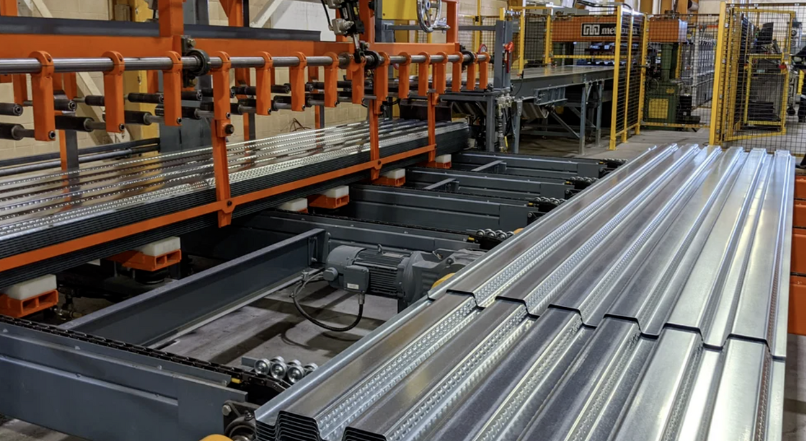
Posted on Wednesday, October 9, 2024
As the roll forming industry continues to evolve, new businesses looking to enter the market must stay informed about emerging trends. Understanding these trends is crucial for positioning yourself for success and meeting the changing demands of customers. In this blog, we will explore key trends in roll forming, including green manufacturing, lightweight metals, new product applications, automation, and industry collaboration.
Sustainability is no longer just a buzzword; it has become a core value for many industries, including roll forming. New businesses should prioritize green manufacturing practices that minimize environmental impact. This includes using recycled materials in production processes and implementing waste reduction strategies.
Innovations in eco-friendly coatings and finishes are also gaining traction, as customers increasingly demand environmentally responsible products. By adopting sustainable practices, businesses can not only reduce their carbon footprint but also appeal to a growing segment of eco-conscious consumers.
The demand for lightweight metal components is on the rise, driven by industries such as automotive, aerospace, and construction. Lightweight metals like aluminum and advanced alloys offer several advantages, including improved fuel efficiency, reduced energy consumption, and easier handling during installation.
For new businesses, focusing on lightweight metal applications can open up opportunities in sectors looking for durable yet lightweight solutions. Understanding the properties and advantages of these materials will be key in developing innovative products that meet market needs.
The roll forming industry is not limited to traditional applications. Emerging markets and innovative product designs are creating new opportunities for roll formed products. For instance, roll forming is being increasingly utilized in the production of customized building components, furniture, and even advanced packaging solutions.
New businesses should consider exploring niche markets and specialized applications that may have less competition but a high demand for custom solutions. By offering unique products tailored to specific customer needs, businesses can carve out a competitive advantage.
As technology continues to advance, the integration of automation in roll forming processes is becoming more prevalent. Automation enhances efficiency, reduces labor costs, and increases production precision. Investing in automated roll forming machines can significantly improve manufacturing capabilities, allowing businesses to meet larger orders with shorter lead times.
Additionally, incorporating Internet of Things (IoT) technology and artificial intelligence (AI) into roll forming operations can optimize production schedules and monitor machine performance in real time. By embracing these technological advancements, new businesses can improve productivity and quality, ensuring they stay ahead in a competitive landscape.
In a rapidly changing market, collaboration is vital for success. New businesses should seek to establish partnerships within the roll forming ecosystem, including relationships with suppliers, distributors, and other manufacturers. These collaborations can lead to knowledge sharing, resource optimization, and joint ventures that enhance market reach.
Networking within industry associations and attending trade shows can also provide valuable insights into market trends and customer preferences. By actively participating in the roll forming community, businesses can gain a competitive edge and foster innovation.
The future of roll forming is filled with exciting opportunities for new businesses willing to adapt to emerging trends. By focusing on green manufacturing, lightweight metals, innovative product applications, automation, and collaboration, entrepreneurs can position themselves for success in a dynamic market.
As you embark on your journey in the roll forming industry, keep an eye on these trends and consider how you can leverage them to meet the needs of your customers and contribute to a sustainable future.

Understanding Coil IDs, Mandrel Sizing, and Shear Pin Safety in Uncoilers
Posted on Wednesday, October 1, 2025
Mismatched sizes can lead to machine damage, downtime, and safety hazards — often evidenced by a shear pin failure.

How Coil Tensile Strength Affects Roll Forming and How to Adjust Your Machine
Posted on Wednesday, October 1, 2025
Changes in tensile strength can significantly affect the finished profile, causing misaligned bends, uneven edges, and out-of-spec parts.

Why Paint Cracks on an Embossing Line Running Pre-Painted Coil and How to Prevent It
Posted on Wednesday, October 1, 2025
This issue not only affects the visual quality of the product but can also lead to increased scrap rates and customer complaints.

The Most Popular Standing Seam Metal Roof Panels in the U.S. — A Comprehensive Guide
Posted on Monday, September 29, 2025
In this post, we’ll explore what panel styles and sizes are most popular in the U.S